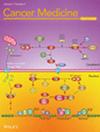Effect of Fluence Rate on Tumor Tissue Damage in IRDye700DX-Based Photoimmunotherapy
Abstract
Objective
IRDye700DX-based photoimmunotherapy (IR700-based PIT) is a newly developed cancer phototherapy using an antibody–photosensitizer conjugate (APC). The APC for IR700-based PIT (mAb-IR700) bound to target molecules on the membrane of cancer cells causes rapid cell necrosis following light irradiation. It is thus reasonable to consider that the light irradiation in IR700-based PIT influences its therapeutic effect. However, the relationship between the therapeutic effect and light irradiation conditions has remained unclear. This study aimed to investigate the influence of the light dose and fluence rate on IR700-based PIT efficacy.
Methods
We first examined the effect on cytotoxicity in vitro. Epidermal growth factor receptor (EGFR)-overexpressing A431 tumor cells were incubated with an mAb-IR700 targeting EGFR and exposed to light. Next, the effect on tumor tissue damage was examined in vivo. A431 cells and two human epidermal growth factor receptor 2-overexpressing tumor cell lines were subcutaneously grafted into BALB/c nude mice. The mice were exposed to light 1 day after mAb-IR700 injection.
Results
The number of propidium iodide-positive dead cells in vitro increased in a light dose-dependent manner but was not influenced by fluence rate. One day after light irradiation in vivo revealed that the tumor tissue damage increased in a light dose-dependent manner but decreased with increasing fluence rate in the three tumor-grafted animal models. Furthermore, tumor growth inhibition data after 24 days from IR700-based PIT was consistent with the acute tissue-damage data.
Conclusion
This study demonstrates that fluence rate as well as light dose impacts in vivo anti-tumor effect, and the effects on tumor microenvironment might be responsible for the discrepancy from in vitro results.


 求助内容:
求助内容: 应助结果提醒方式:
应助结果提醒方式:


